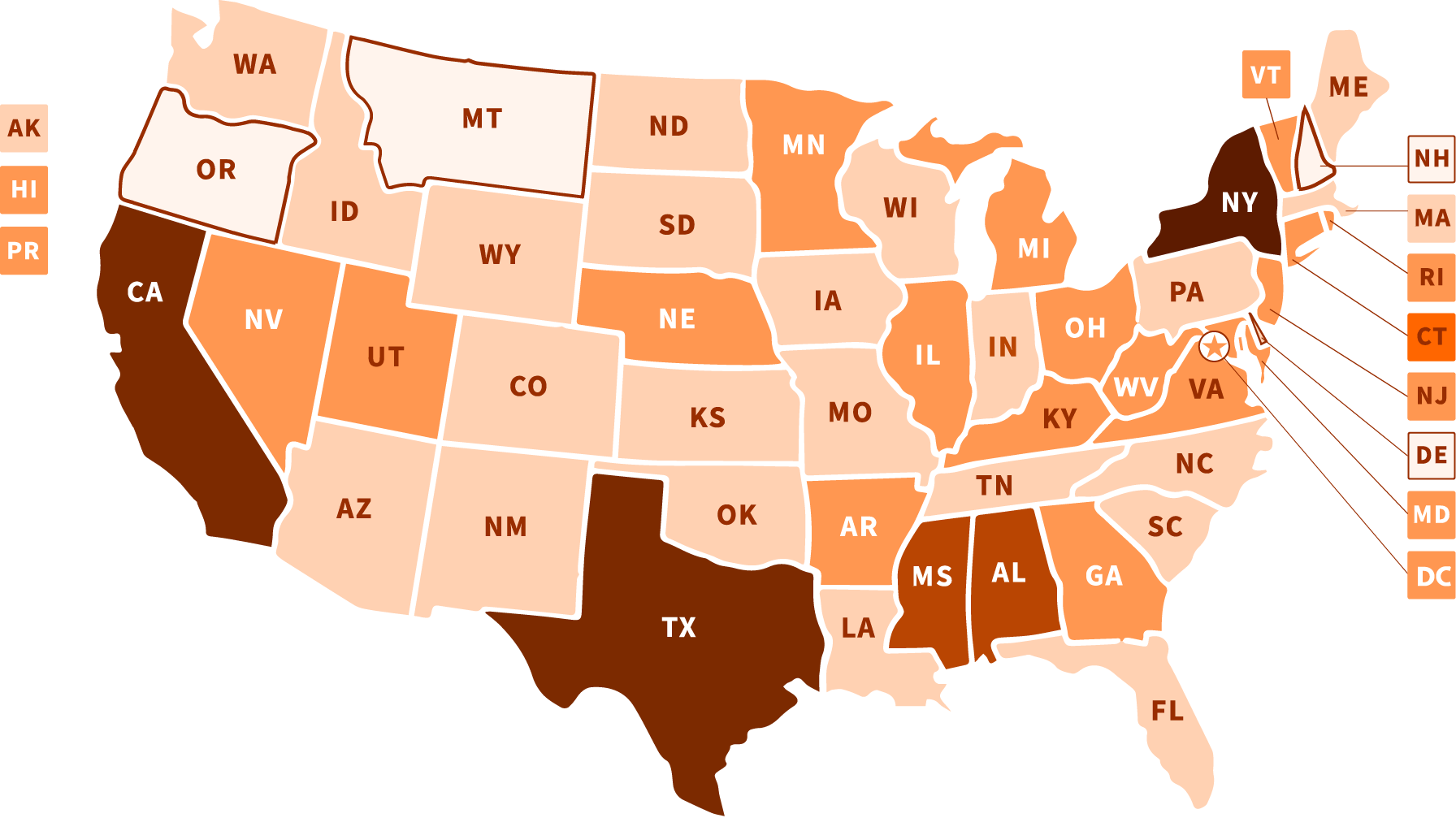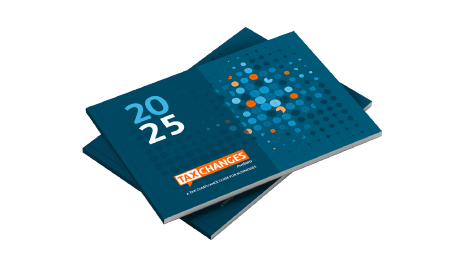
If you run a store on Shopify, follow these best practices for sales tax automation
Ecommerce is booming and Shopify is one of the top destinations for growth-minded online sellers. According to Backlinko, more than 4.6 million live websites use the platform, and the number of shoppers who have placed an order with Shopify merchants has increased by nearly 50% since 2020.
As the retailers who use Shopify grow and scale, tax compliance can be one of the biggest barriers to a breakthrough. The complexity of these obligations only steepens as businesses expand into new markets and regions. Sales tax automation on Shopify holds the key to streamlined compliance and peace of mind. Technology is continually pushing the envelope.
Building off the insights and guidance in the new guide from Avalara, Solving top tax compliance challenges for Shopify businesses, we put together a breakdown of best practices to keep in mind when setting up your automated tax compliance strategy for Shopify stores, whether you run one or several.
You’ll also learn how Avalara for Shopify (now available!) helps bring these best practices to life.
The how and why of Shopify sales tax automation
First, a few quick words on automating sales tax processes and why doing so is valuable.
Merchants can use built-in Shopify features or third-party tax compliance software to automatically calculate, collect, and remit sales tax on transactions. At a time when sellers must comply with fast-changing tax regulations across different jurisdictions, attempting to manage these activities manually can be cumbersome and — at a certain point — impractical.
Here are some descriptions of Shopify merchants that should take a hard look at sales tax automation:
- You’re selling across multiple states in the U.S.
- You’re selling internationally or planning to expand into new countries.
- You run more than one store on Shopify.
- You’re managing an omnichannel sales strategy, spanning different online platforms as well as potentially brick-and-mortar retail locations.
- You deal with exempt customers and tax-free sales.
- Your business is rapidly scaling in terms of scope and sales volume.
No matter the size or state of your Shopify business, sales tax automation can help you confidently navigate all of the many tax rates, codes, rule changes, geographic nuances, and remittance obligations that are in play. With technology lending a hand, your team can focus more energy on innovating and delivering great customer experiences.
“Tax compliance involves navigating a web of complex regulations, endless paperwork, and recurring filings. Automating these processes with technology allows your team to focus on growing the business instead of getting bogged down by administrative tasks.” —Kunle Campbell, Founder of Conscious Commerce
Sales tax automation on Shopify: Best practices
With retail ecommerce sales expected to reach $8 trillion by 2027, now is the time to ensure your approach to Shopify tax compliance is geared for what’s next. Make sure your compliance solutions can help you put these tips into practice.
Configure your tax settings based on nexus obligations.
“The Wayfair decision turned the world of ecommerce taxation upside down, transforming a simple physical presence rule into a maze of economic nexus requirements for online sellers,” says Blake Oliver, Founder and CEO of Earmark. He’s referring to the landmark 2018 U.S. Supreme Court ruling in South Dakota v. Wayfair, Inc., which proved to be a turning point for tax complexity in the U.S.

“Pre-Wayfair, you only collected sales tax where you had physical presence,” Oliver explains. “Now, economic activity alone triggers tax obligations across multiple jurisdictions. Businesses have to track sales volumes across states, register in new jurisdictions when they exceed thresholds, and keep up with constantly changing compliance requirements.”
Staying on top of these dynamic thresholds manually is a big challenge, and not sustainable for most. That’s why, as Oliver notes, many companies are moving to automated tax solutions, which can monitor nexus status and alert businesses when they’re approaching nexus thresholds (and thus tax obligations) in new states.
Unsure where to start? Take a nexus risk assessment to help determine where your obligations exist.
Avalara for Shopify includes an economic nexus tracker that monitors your sales activity against state-specific thresholds and evaluation periods, alerting you if you’re approaching or exceeding a tax obligation.
Automate tax calculations based on precise factors.
Sales tax rates can vary considerably across regions, and ZIP codes are not an effective means for determining them accurately. Meanwhile, there are virtually endless different category-based tax codes for products and services.
Leading tax automation software comes with these rates and codes programmed and regularly updated, so you don’t need to know the differing tax rules for thousands of different jurisdictions and product categories.
“There are too many specific tax codes for a brand to keep track of: When you do and don’t collect tax, how much to collect, and what you should remit,” says Jeremy Horowitz of Because Ventures. “It’s a massive data problem that brands won’t have the internal expertise to handle.”
“At this point,” Horowitz advises, “solving this problem requires software to properly calculate, collect, and remit sales tax in every region a brand operates within.”
Use tools that provide real-time tax calculations based on precise factors like address-level customer location, product category, and jurisdiction-specific rules.
Avalara for Shopify provides calculations for 13,000+ U.S. sales and use tax jurisdictions. You can sync your product/item catalog information between Shopify and Avalara to allow tax code mapping.
Simplify tax collection for international sales.
International tax compliance is one of the more daunting considerations for growing Shopify businesses, as it introduces value-added tax (VAT), customs duties, and import taxes. At the same time, tapping into new cross-border markets is one of the most exciting growth frontiers for ecommerce merchants.
Helping sellers overcome the complexities of international tax compliance is one of the key benefits of leveraging automation. Technology can even help small businesses grow their footprint across continents without being burdened, and is increasingly essential as e-invoicing mandates roll out.
Empowering merchants for global tax compliance was a core focus when Shopify and Avalara expanded our partnership in 2024.
Cross-border tax compliance in Avalara for Shopify calculates customs duties at checkout, helping prevent unexpected costs for customers upon delivery. Avalara also automates the collection and remittance of VAT in 192 jurisdictions with VAT coverage.
Ensure your technology is seamlessly integrated.
While Shopify might be your central selling hub, you’re likely using several tools and software as part of your operations. These might include accounting systems, ERPs, CRMs, and other ecommerce platforms. As you explore and adopt new solutions, be sure to prioritize smooth integration with Shopify and your automated tax solution.
The future of ecommerce is omnichannel, so businesses need a tech foundation equipped to grow alongside them, in Shopify, and beyond.
Avalara offers over 1,200 signed partner integrations so you can connect to numerous other software platforms, in addition to Shopify, for seamless omnichannel selling.
Plan for future growth with automation
Scaling your business tomorrow can be practically frictionless if you lay the right groundwork today. Supporting your Shopify store with automated tax solutions that can grow with your business is essential.
Learn more about how Avalara for Shopify makes end-to-end compliance easier, or dive into our free ebook for more in-depth guidance and experts tips: Solving top tax compliance challenges for Shopify businesses.

Your competitors live by this annual report
Trusted by professionals, this valuable resource simplifies complex topics with clarity and insight.
Stay up to date
Sign up for our free newsletter and stay up to date with the latest tax news.












